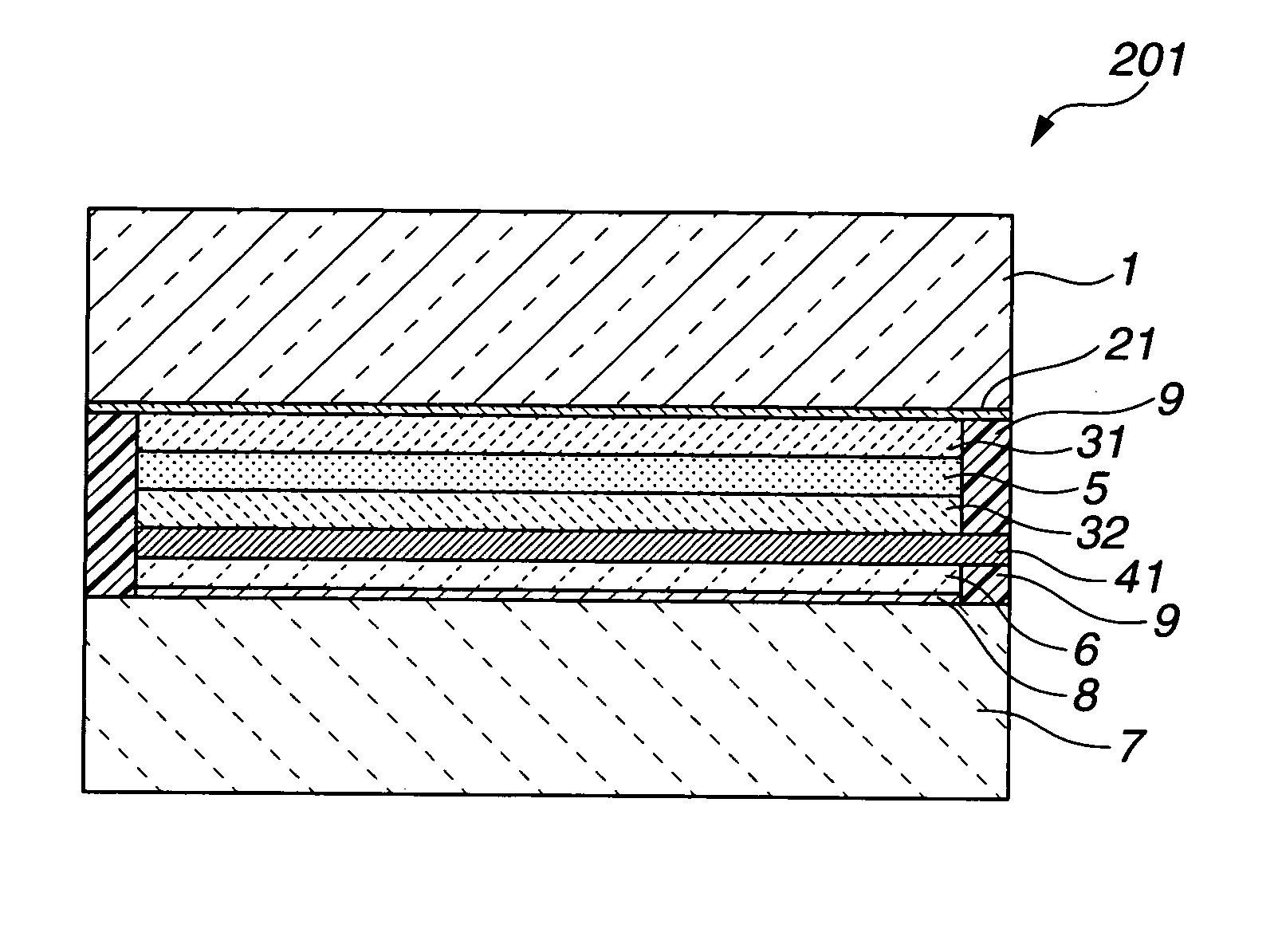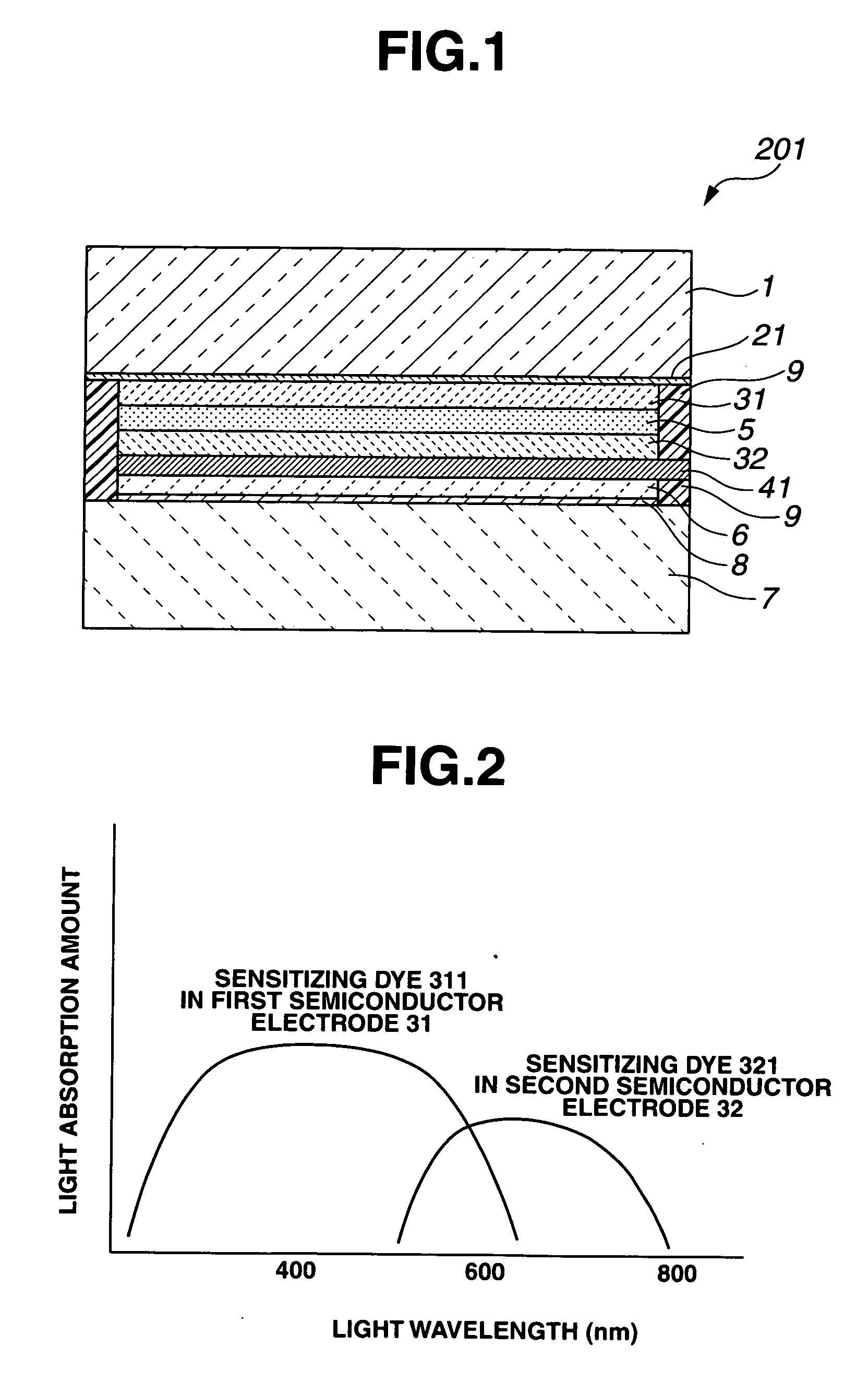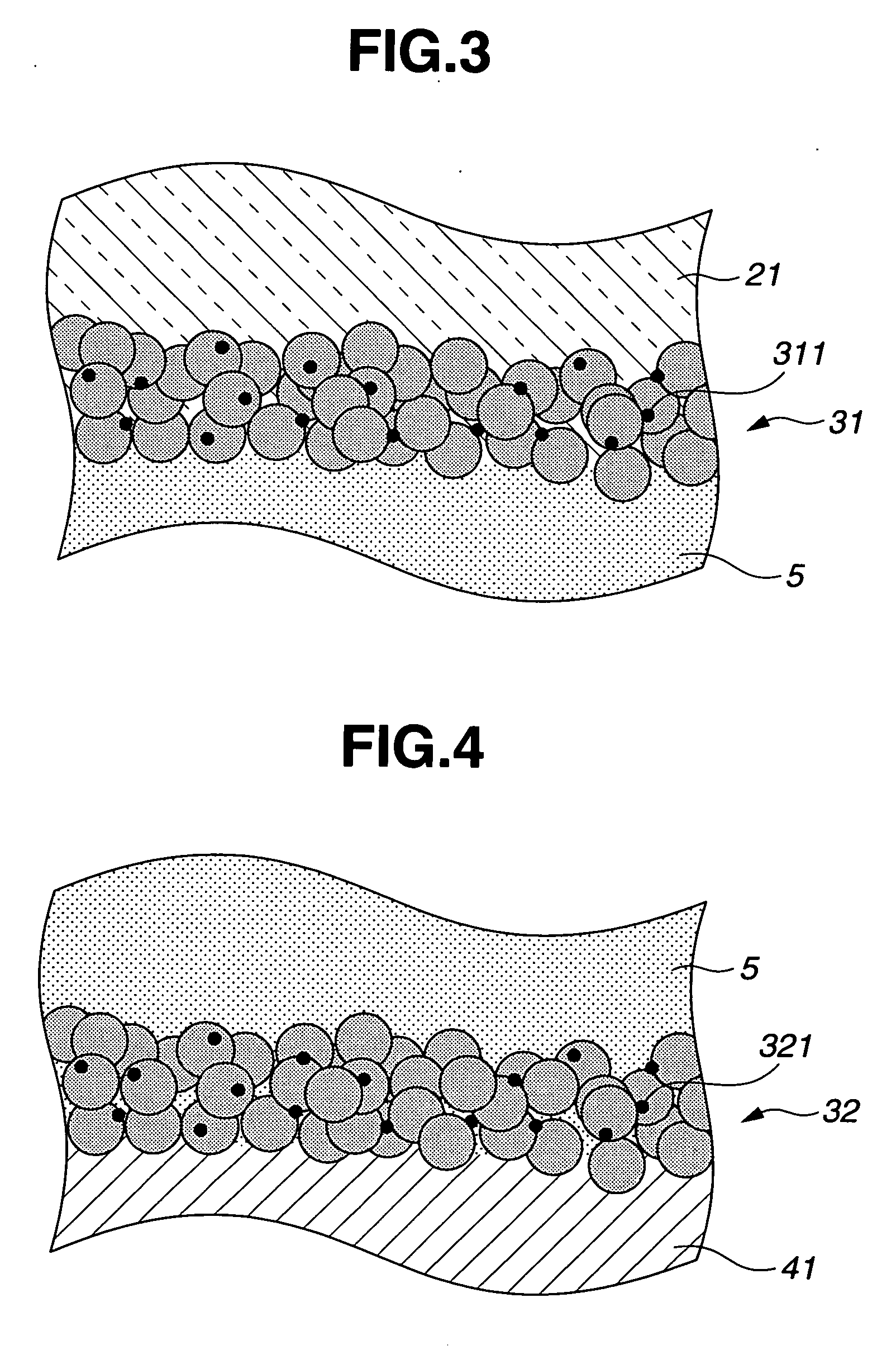Dye-sensitized solar cell
a solar cell and dye technology, applied in the direction of light-sensitive devices, capacitors, electrolytic capacitors, etc., can solve the problems of high material processing cost and difficulty in developing a dye capable, and achieve the effect of improving light utilization efficiency and light utilization efficiency
- Summary
- Abstract
- Description
- Claims
- Application Information
AI Technical Summary
Benefits of technology
Problems solved by technology
Method used
Image
Examples
example 1
[0082] (1) Production of First Laminated Member
[0083] A glass substrate having a length of 100 mm, a width of 100 mm and a thickness of 1 mm was prepared as a light-transmitting substrate 1. A third collector electrode 43 was formed of tungsten in a grid pattern with a width of 1 mm, a pitch of 10 mm and a thickness of 1 μm on a surface of the substrate 1 by a RF sputtering process. After that, a light-transmitting conductive layer 21 of fluorine-doped tin oxide was formed with a thickness of 500 nm by a RF sputtering process on the surface of the substrate 1 to which the third collector electrode 43 had been applied. An electrode layer (as an electrode body) having a length of 90 mm, a width of 90 mm and a thickness of 20 μm were then formed by applying a paste containing titania particles of 10 to 20 nm in diameter (available under the trade name of “Ti-Nonoxide D / SP” from Solaronix) to a surface of the light-transmitting conductive layer 21 by a screen printing process, drying a...
example 2
[0090] A dye-sensitized solar cell 206 was manufactured in the same manner as in Example 1 except that a second collector electrode 42 of tungsten in sheet form was made by a sputtering process with a thickness of 1 μm on a surface of the ceramic substrate 7 and that the catalyst layer 8 was provided on a surface of the second collector electrode 42. Solar cell power was taken from each of the third collector electrode 43, the first collector electrode 41 and the second collector electrode 42. The performance of the thus-obtained dye-sensitized solar cell 206 was evaluated in the same manner as in Example 1. The dye-sensitized solar cell 206 of Example 2 characteristically showed a conversion efficiency of 10.8%. It is thus clear that the photoelectric conversion efficiency is further improved by the arrangement of the collector electrode 42 on the side of the catalyst layer 8.
PUM
 Login to View More
Login to View More Abstract
Description
Claims
Application Information
 Login to View More
Login to View More - R&D
- Intellectual Property
- Life Sciences
- Materials
- Tech Scout
- Unparalleled Data Quality
- Higher Quality Content
- 60% Fewer Hallucinations
Browse by: Latest US Patents, China's latest patents, Technical Efficacy Thesaurus, Application Domain, Technology Topic, Popular Technical Reports.
© 2025 PatSnap. All rights reserved.Legal|Privacy policy|Modern Slavery Act Transparency Statement|Sitemap|About US| Contact US: help@patsnap.com



